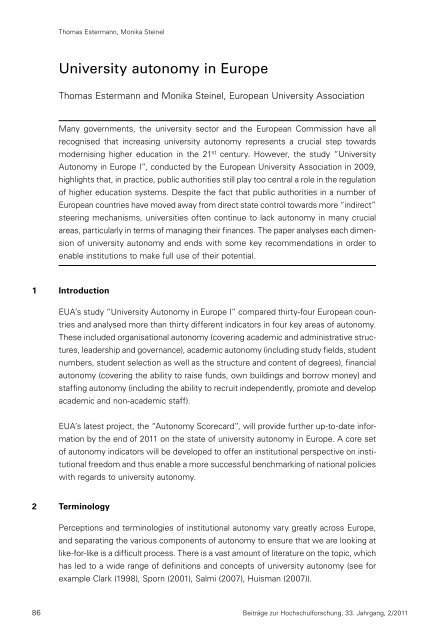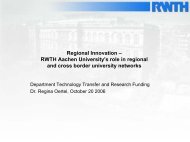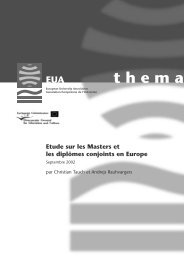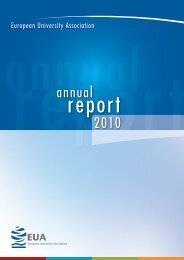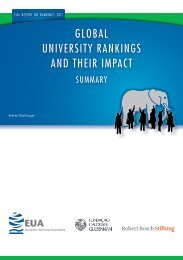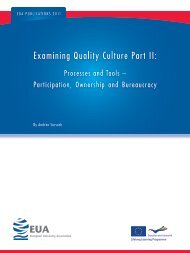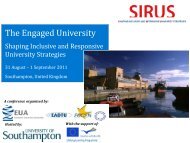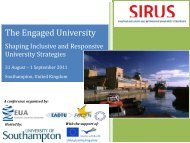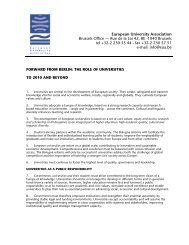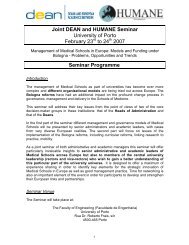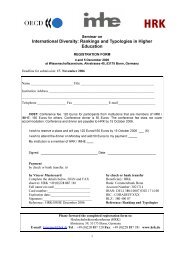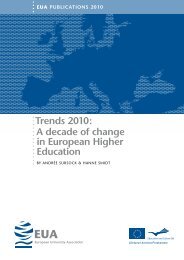Beiträge zur Hochschulforschung - European University Association
Beiträge zur Hochschulforschung - European University Association
Beiträge zur Hochschulforschung - European University Association
Create successful ePaper yourself
Turn your PDF publications into a flip-book with our unique Google optimized e-Paper software.
86<br />
Thomas Estermann, Monika Steinel<br />
<strong>University</strong> autonomy in Europe<br />
Thomas Estermann and Monika Steinel, <strong>European</strong> <strong>University</strong> <strong>Association</strong><br />
Many governments, the university sector and the <strong>European</strong> Commission have all<br />
recognised that increasing university autonomy represents a crucial step towards<br />
modernising higher education in the 21 st century. However, the study “<strong>University</strong><br />
Autonomy in Europe I”, conducted by the <strong>European</strong> <strong>University</strong> <strong>Association</strong> in 2009,<br />
highlights that, in practice, public authorities still play too central a role in the regulation<br />
of higher education systems. Despite the fact that public authorities in a number of<br />
<strong>European</strong> countries have moved away from direct state control towards more “indirect”<br />
steering mechanisms, universities often continue to lack autonomy in many crucial<br />
areas, particularly in terms of managing their finances. The paper analyses each dimen-<br />
sion of university autonomy and ends with some key recommendations in order to<br />
enable institutions to make full use of their potential.<br />
1 Introduction<br />
EUA’s study “<strong>University</strong> Autonomy in Europe I” compared thirty-four <strong>European</strong> coun-<br />
tries and analysed more than thirty different indicators in four key areas of autonomy.<br />
These included organisational autonomy (covering academic and administrative struc-<br />
tures, leadership and governance), academic autonomy (including study fields, student<br />
numbers, student selection as well as the structure and content of degrees), financial<br />
autonomy (covering the ability to raise funds, own buildings and borrow money) and<br />
staffing autonomy (including the ability to recruit independently, promote and develop<br />
academic and non-academic staff).<br />
EUA’s latest project, the “Autonomy Scorecard”, will provide further up-to-date infor-<br />
mation by the end of 2011 on the state of university autonomy in Europe. A core set<br />
of autonomy indicators will be developed to offer an institutional perspective on insti-<br />
tutional freedom and thus enable a more successful benchmarking of national policies<br />
with regards to university autonomy.<br />
2 Terminology<br />
Perceptions and terminologies of institutional autonomy vary greatly across Europe,<br />
and separating the various components of autonomy to ensure that we are looking at<br />
like-for-like is a difficult process. There is a vast amount of literature on the topic, which<br />
has led to a wide range of definitions and concepts of university autonomy (see for<br />
example Clark (1998), Sporn (2001), Salmi (2007), Huisman (2007)).<br />
<strong>Beiträge</strong> <strong>zur</strong> <strong>Hochschulforschung</strong>, 33. Jahrgang, 2/2011


